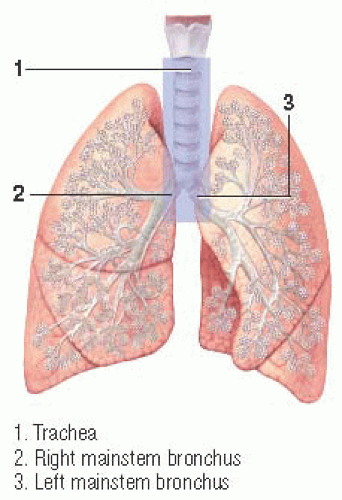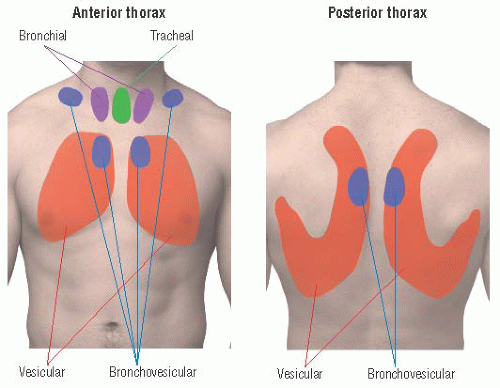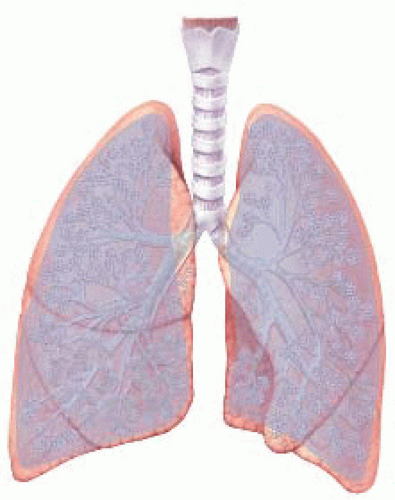Breath Sounds Heard in Healthy Individuals
ANATOMY AND PHYSIOLOGY
Normal breath sounds are broadly defined as breathing heard through the chest wall of a healthy person. They include tracheal, bronchial, vesicular, and bronchovesicular sounds, as well as sounds heard at the mouth. Three variables affect the normal sounds heard during auscultation: the distance between the source of the sound and the chest wall, the path of sound transmission, and the sound’s location. Normal breath sounds are produced by airflow patterns, by associated pressure changes within the airways, and by solid tissue vibrations.
Normal breath sounds heard over large airways are produced by turbulent airflow in those airways. They’re loudest when auscultated over the trachea on the anterior chest wall surface next to the sternum. As air travels through the airways beyond the segmental bronchi, these normally high-pitched sounds become diminished because they’re filtered by the chest wall, pleurae, and air-filled lung tissue. The normal breath sounds heard over most of the chest wall surface are soft and low-pitched; they’re softer and shorter during expiration than during inspiration.
Tracheal and bronchial breath sounds
Normal breath sounds heard over the trachea (tracheal breath sounds) (♦ Sound 51) and mainstem bronchi (bronchial breath sounds) are produced by turbulent airflow patterns. Tracheal breath sounds are described as harsh and high-pitched and can be heard over the trachea. Bronchial breath sounds (♦ Sound 57) are described as loud and high-pitched and can be heard next to the trachea. Inspired and expired air travels easily through these large airways.
When tracheal breath sounds are being auscultated, a brief pause may be heard at the end of inspiration, and expiration is longer than inspiration. (♦ Sound 57) The inspiratory-expiratory (I:E) ratio is 1:2 to 1:3. The sound frequency distribution of these breath sounds is 200 to 2,000 Hz. (♦ Sound 57)
Stay updated, free articles. Join our Telegram channel

Full access? Get Clinical Tree






